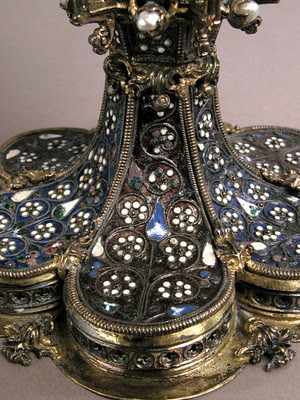| Nautilus cup Nagyszeben, mid-17th century |
About 30 precious silver and goldsmith works from Hungary and Transylvania will be auctioned off at Christie's New York tomorrow (17 May 2011). (Sale 2447: Important English, Continental and American Silver and Gold). The pieces in question are all Renaissance and Baroque works, mainly dating from the 17th century. Before WWII, the objects all belonged to the Herzog collection. The collection of Baron Mór Lipót Herzog, a wealthy Jewish magnate in Budapest was one of the largest of its time in Hungary, which got largely dispersed during the war. The silver objects in the collection were last fully documented in a 1930 inventory, and most of the pieces were on view for the last time at various exhibitions at Budapest's Museum of Applied Arts at around that time. The pieces have been recorded as wartime victims of looting, and their whereabouts were unknown until this sale.
The New York Times also wrote on the sale, and has this to say about the provenance of the objects, based on a telephone interview with the anonymous seller: "a Herzog family member had managed to bring the pieces to New York at some point. The family had long kept them in storage."
You can browse the objects on the website of Christie's, where a full e-catalogue and a slideshow of objects is also avaliable. When browsing the auction catalogue, the lots in question go from Lot 99 to 127 + lot 132.
 |
| 17th century pendant with St. George |
Many objects from the Herzog collection are of course embroiled in restitution cases. Record-setting pieces, like the recently restituted portrait of Sigismund Baldinger by Georg Pencz have come to the market from the collection (Christie's sale 7862 of last year). Currently there is a major lawsuit going on, as heirs of the Herzog family sued the Hungarian state for objects kept in various Hungarian public collections. The emergence of these Hungarian silver objects among these circumstance is definitely most interesting.
Nevertheless, after the best pieces of the Salgó collection entered the Metropolitan Museum, it would be nice to see these pieces stay together as well, and - preferably - enter a public collection.




